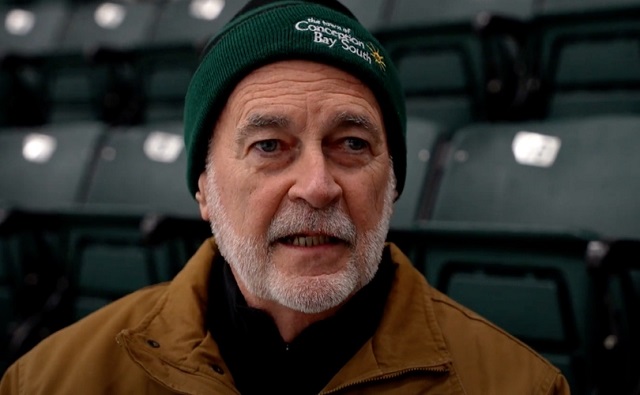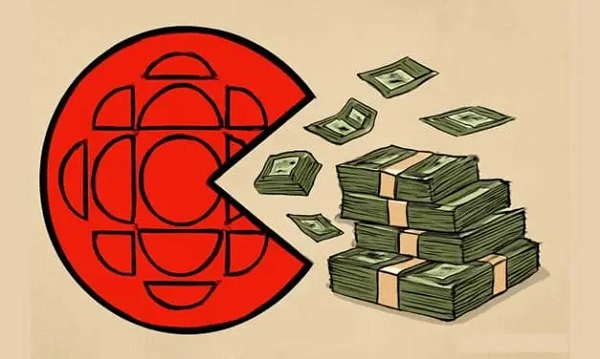National
Liberal MP calls for review of Trudeau’s leadership: ‘Every leader has a best-before date’

Ken McDonald, MP
From LifeSiteNews
” at least give people the opportunity to have their say “
Liberal Member of Parliament (MP) Ken McDonald is calling for a review of Prime Minister Justin Trudeau’s leadership.
In a January 24 interview with the Canadian Broadcasting Corporation (CBC), McDonald, a Newfoundland MP, argued that Canadians should be given an opportunity to replace Trudeau as leader of the Liberal Party.
“Every leader, every party has a best-before date. Our best-before date is here,” he declared.
McDonald observed that Trudeau managed to lead the Liberal Party to victory in 2015. However, he also noted that Trudeau has since disappointed Canadians.
“As a party, let’s clear the air, and if people are still intent on having the leader we have now, fine. But at least give people the opportunity to have their say in what they think [of] the direction the party is going,” he said.
Trudeau seems to have already attempted to regain popularity in Atlantic Canada by pausing the collection of the carbon tax on home heating oil for three years.
However, the exemption has led to increased dislike for Trudeau nationwide as it primarily benefits the Liberal-held Atlantic provinces, leaving other provinces literally out in the cold as they heat their homes with clean-burning natural gas, a fuel that will not be exempted from the carbon tax.
Following this, five Canadian premiers from coast to coast banded together to demand Trudeau drop the carbon tax on home heating bills for all provinces, saying his policy of giving one region a tax break over another has caused “divisions.”
In recent months, Trudeau’s popularity with Canadians has plummeted, with polls revealing that most Canadians think that he should step down before the next election.
McDonald is not the only member of the Liberal Party to condemn Trudeau’s leadership. In November, Liberal Senator Percy Downe wrote that the Liberal party needs to look for another leader.
Recent polling shows that support for Pierre Poilievre’s Conservative Party is hitting positive levels not seen since the early days of former Prime Minister Stephen Harper. Indeed, a Federal @338Canada model has the “Outcome Odds” for a Conservative majority government at 95 percent.
Digging a little deeper, a recent Leger poll shows the Conservatives taking some 211 seats, a gain of 90 seats (well over the majority of 170 needed) with the Trudeau Liberals losing 90 seats. They would win only 70 if an election were held today.
Earlier this week, Trudeau’s reputation took another blow: the Federal Court ruled that his use of the Emergencies Act in response to the 2022 Freedom Convoy was “not justified” and a violation of Charter rights. Notably, the ruling came from a Liberal appointed judge.
During the convoy, Trudeau had disparaged unvaccinated Canadians, saying those opposing his measures were of a “small, fringe minority” who held “unacceptable views” and did not “represent the views of Canadians who have been there for each other.”
In response to the ruling, Conservative Party leader Pierre Poilievre called for Trudeau to be ‘fired.’ He argued that the current Prime Minister “caused the crisis by dividing people. Then he violated Charter rights to illegally suppress citizens.”
“As PM, I will unite our country for freedom,” he promised.
Alberta
Central Alberta MP resigns to give Conservative leader Pierre Poilievre a chance to regain a seat in Parliament

From LifeSiteNews
Conservative MP Damien Kurek stepped aside in the Battle River-Crowfoot riding to allow Pierre Poilievre to enter a by-election in his native Alberta.
Conservative MP Damien Kurek officially resigned as an MP in the Alberta federal riding of Battle River-Crowfoot in a move that will allow Conservative Party of Canada leader Pierre Poilievre to run in a by-election in that riding to reclaim his seat in Parliament.
June 17 was Kurek’s last day as an MP after he notified the House Speaker of his resignation.
“I will continue to work with our incredible local team to do everything I can to remain the strong voice for you as I support Pierre in this process and then run again here in Battle River-Crowfoot in the next general election,” he said in a statement to media.
“Pierre Poilievre is a man of principle, character, and is the hardest working MP I have ever met,” he added. “His energy, passion, and drive will have a huge benefit in East Central Alberta.”
Kurek won his riding in the April 28 election, defeating the Liberals by 46,020 votes with 81.8 percent of the votes, a huge number.
Poilievre had lost his Ottawa seat to his Liberal rival, a seat that he held for decades, that many saw as putting his role as leader of the party in jeopardy. He stayed on as leader of the Conservative Party.
Poilievre is originally from Calgary, Alberta, so should he win the by-election, it would be a homecoming of sorts.
It is now up to Prime Minister of Canada Mark Carney to call a by-election in the riding.
Carney had promised that he would “trigger” a by-election at once, saying there would be “no games” trying to prohibit Poilievre from running and win a seat in a safe Conservative riding.
Despite Kurek’s old seat being considered a “safe” seat, a group called the “Longest Ballot Committee” is looking to run hundreds of protest candidates against Poilievre in the by-election in the Alberta Battle River–Crowfoot riding, just like they did in his former Ottawa-area Carleton riding in April’s election.
Business
The CBC is a government-funded giant no one watches

This article supplied by Troy Media.
 By Kris Sims
By Kris Sims
The CBC is draining taxpayer money while Canadians tune out. It’s time to stop funding a media giant that’s become a political pawn
The CBC is a taxpayer-funded failure, and it’s time to pull the plug. Yet during the election campaign, Prime Minister Mark Carney pledged to pump another $150 million into the broadcaster, even as the CBC was covering his campaign. That’s a blatant conflict of interest, and it underlines why government-funded journalism must end.
The CBC even reported on that announcement, running a headline calling itself “underfunded.” Think about that. Imagine being a CBC employee asking Carney questions at a campaign news conference, while knowing that if he wins, your employer gets a bigger cheque. Meanwhile, Conservative Leader Pierre Poilievre has pledged to defund the CBC. The broadcaster is literally covering a story that determines its future funding—and pretending there’s no conflict.
This kind of entanglement isn’t journalism. It’s political theatre. When reporters’ paycheques depend on who wins the election, public trust is shattered.
And the rot goes even deeper. In the Throne Speech, the Carney government vowed to “protect the institutions that bring these cultures and this identity to the world, like CBC/RadioCanada.” Before the election, a federal report recommended nearly doubling the CBC’s annual funding. Former heritage minister Pascale St-Onge said Canada should match the G7 average of $62 per person per year—a move that would balloon the CBC’s budget to $2.5 billion annually. That would nearly double the CBC’s current public funding, which already exceeds $1.2 billion per year.
To put that in perspective, $2.5 billion could cover the annual grocery bill for more than 150,000 Canadian families. But Ottawa wants to shovel more cash at an organization most Canadians don’t even watch.
St-Onge also proposed expanding the CBC’s mandate to “fight disinformation,” suggesting it should play a formal role in “helping the Canadian population understand fact-based information.” The federal government says this is about countering false or misleading information online—so-called “disinformation.” But the Carney platform took it further, pledging to “fully equip” the CBC to combat disinformation so Canadians “have a news source
they know they can trust.”
That raises troubling questions. Will the CBC become an official state fact-checker? Who decides what qualifies as “disinformation”? This isn’t about journalism anymore—it’s about control.
Meanwhile, accountability is nonexistent. Despite years of public backlash over lavish executive compensation, the CBC hasn’t cleaned up its act. Former CEO Catherine Tait earned nearly half a million dollars annually. Her successor, Marie Philippe Bouchard, will rake in up to $562,700. Bonuses were scrapped after criticism—but base salaries were quietly hiked instead. Canadians struggling with inflation and rising costs are footing the bill for bloated executive pay at a broadcaster few of them even watch.
The CBC’s flagship English-language prime-time news show draws just 1.8 per cent of available viewers. That means more than 98 per cent of TV-viewing Canadians are tuning out. The public isn’t buying what the CBC is selling—but they’re being forced to pay for it anyway.
Government-funded journalism is a conflict of interest by design. The CBC is expensive, unpopular, and unaccountable. It doesn’t need more money. It needs to stand on its own—or not at all.
Kris Sims is the Alberta Director for the Canadian Taxpayers Federation
Troy Media empowers Canadian community news outlets by providing independent, insightful analysis and commentary. Our mission is to support local media in helping Canadians stay informed and engaged by delivering reliable content that strengthens community connections and deepens understanding across the country.
-

 Health2 days ago
Health2 days agoLast day and last chance to win this dream home! Support the 2025 Red Deer Hospital Lottery before midnight!
-

 conflict2 days ago
conflict2 days ago“Evacuate”: Netanyahu Warns Tehran as Israel Expands Strikes on Iran’s Military Command
-

 Energy1 day ago
Energy1 day agoKananaskis G7 meeting the right setting for U.S. and Canada to reassert energy ties
-

 Business1 day ago
Business1 day agoCarney’s Honeymoon Phase Enters a ‘Make-or-Break’ Week
-

 Aristotle Foundation2 days ago
Aristotle Foundation2 days agoThe Canadian Medical Association’s inexplicable stance on pediatric gender medicine
-

 Energy2 days ago
Energy2 days agoCould the G7 Summit in Alberta be a historic moment for Canadian energy?
-

 Alberta1 day ago
Alberta1 day agoAlberta announces citizens will have to pay for their COVID shots
-

 conflict1 day ago
conflict1 day agoIsrael bombs Iranian state TV while live on air






